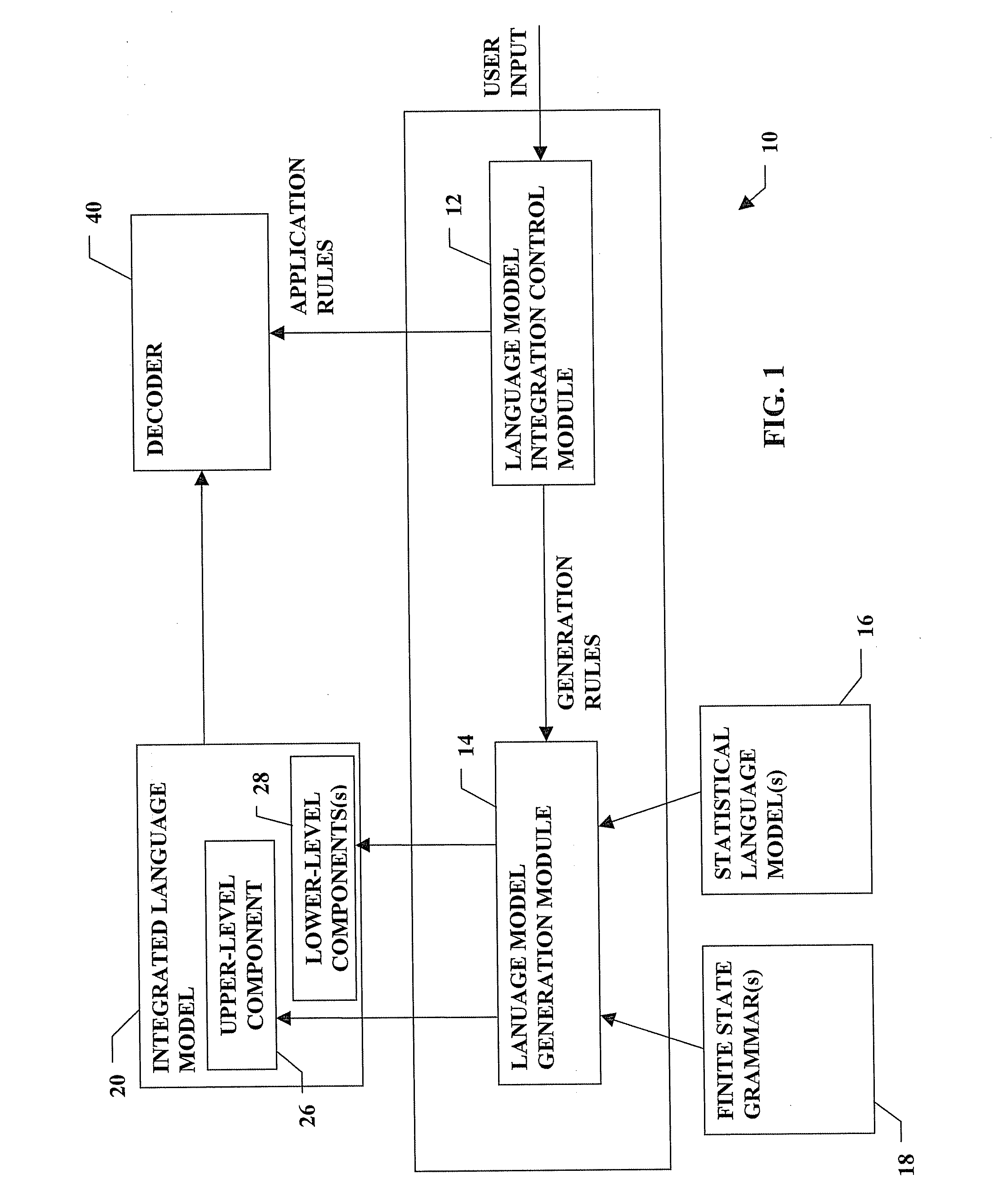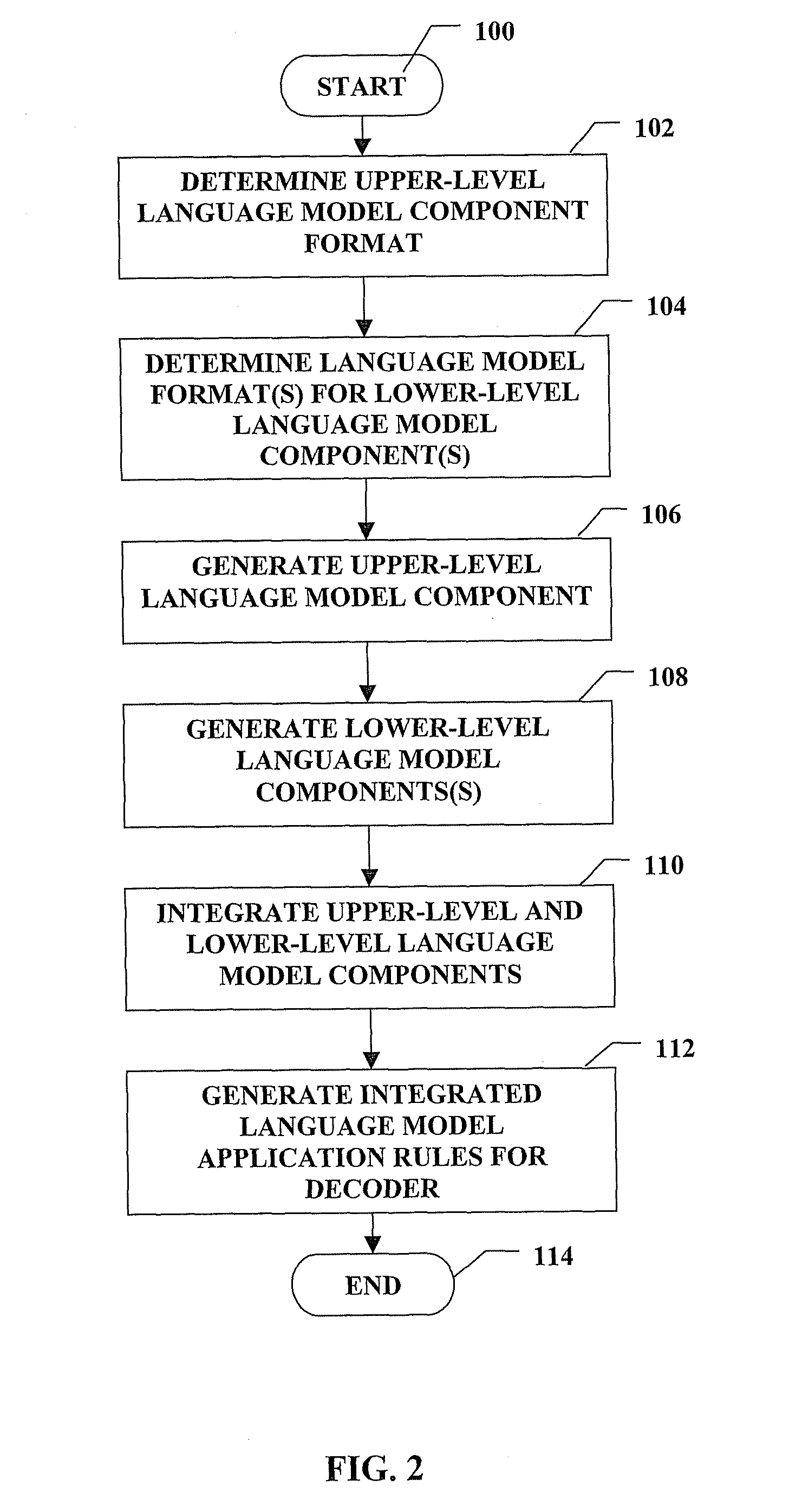Integrated language model, related systems and methods
a language model and language model technology, applied in the field of automatic speech recognition, can solve the problems of high memory and processing demands, time and labor intensive decoding of fsg format, and inability to compile a suitable list of sequences for a given application
- Summary
- Abstract
- Description
- Claims
- Application Information
AI Technical Summary
Benefits of technology
Problems solved by technology
Method used
Image
Examples
Embodiment Construction
[0018]Referring to FIG. 1, according to an embodiment of the present invention, a system 10 for making an integrated language model includes a language model integration control module 12 and a language model generation module 14. Existing statistical language model (SLM) format language models 16 and finite state grammar (FSG) format language models 18 are accessible by the language model generation module 14. An integrated language model 20, including an upper-level language model component 26 having one or more non-terminals, and one or more lower-level language model components 28 for application to the non-terminal(s), is output by the language model generation module 14 and available as an input to the decoder 40 of a speech recognition engine.
[0019]It will be appreciated that speech recognition engines are inherently machine processor-based. Accordingly, the systems and methods herein are realized by at least one processor executing machine-readable code and that inputs to an...
PUM
 Login to View More
Login to View More Abstract
Description
Claims
Application Information
 Login to View More
Login to View More - R&D
- Intellectual Property
- Life Sciences
- Materials
- Tech Scout
- Unparalleled Data Quality
- Higher Quality Content
- 60% Fewer Hallucinations
Browse by: Latest US Patents, China's latest patents, Technical Efficacy Thesaurus, Application Domain, Technology Topic, Popular Technical Reports.
© 2025 PatSnap. All rights reserved.Legal|Privacy policy|Modern Slavery Act Transparency Statement|Sitemap|About US| Contact US: help@patsnap.com



